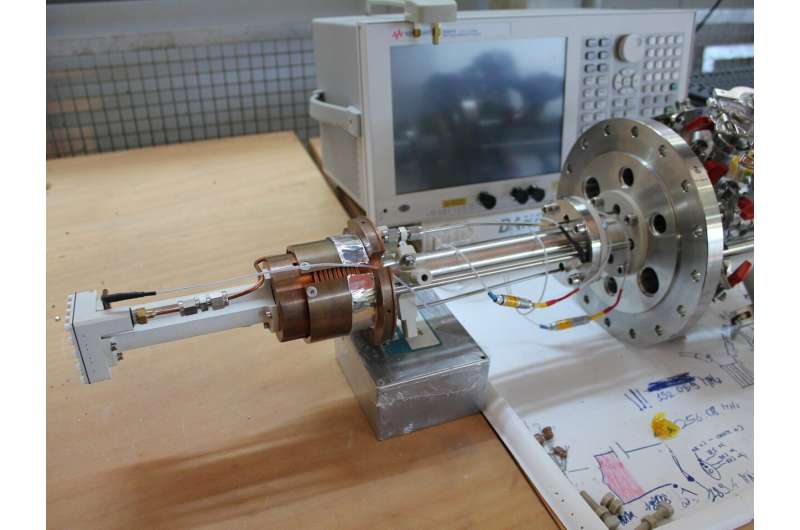In-situ chemistry studies for µSR

Because of the chemical analogy between muonium (a bound muon-electron system) and hydrogen, the muon technique offers a valuable method for exploring many mechanisms in chemistry and chemical physics. The technique provides information on molecular structure, dynamics and reaction kinetics that complement results obtained from other experimental methods. However, additional information can be obtained by the application of pulsed techniques, such as radio-frequency (RF) and laser excitation, and there was therefore a desire to make these routinely available to experimenters.
The setup for many of these chemistry experiments is challenging, and therefore part of the work of Task 7.4 in SINE2020's Sample Environment work package has been to consider the workflow of a chemistry experiment, developing new equipment as required to improve both data quality and reliability of these types of measurements.
To help with sample handling for the measurements, reliable systems for sample deoxygenation and liquid handling have been developed. These make it easy for experimenters to prepare and load samples either in-situ or ex-situ. A chemistry center stick for an existing 4He cryostat was recommissioned and a ceramic cell designed to enable RF measurements to be carried out over a very wide temperature range (-270˚C to room temperature).
However, one of the main improvements has been the development of a chemistry insert optimized for handling liquids. Taking advantage of the geometry of the EMU spectrometer, the new equipment has been configured to mount horizontally (rather than vertically) within the instrument. This helps the samples to flow through the liquid circuit, making it easy to load and unload the cell in-situ, with continuous flow now a possibility for those samples that degrade with time. The equipment incorporates a heat exchanger so that the temperature of the sample cell can be controlled effectively, while also bringing circulating liquids to temperature before they enter the sample cell. The temperature range for this new insert is currently from -30 to 200˚C.
The team from ISIS Muon and Neutron Source, Steve Cottrell and Matteo Aramini with help from Chirs Goodway and Colin Offer, have developed both Shapal ceramic and titanium metal sample holders for the chemistry insert. The ceramic holder is ideal for RF experiments, where the cell body must be an electrical insulator to allow the RF field to penetrate the sample, but also a good thermal conductor for effective control of the sample temperature. However, if these factors are not important for the experiment, this cell is easily exchanged for a metal version that is more robust and (chemically) provides a cleaner environment.
It has taken almost two years of development, but this equipment is now available in the ISIS user program. It is simpler to use, it works reliably and it is easier to change the sample, thus allowing valuable beam time to be used much more efficiently. A broader range of experiments can now be run, including RF measurements, all with almost a doubling of the data quality.
The team's next step will be to develop a nitrogen flow version of the chemistry insert to provide an extended temperature range (to -180˚C), thus allowing more experiments to benefit from this improved design. They also want to revise the shape of the ceramic liquid cell to better match the circular shape of the birdcage coil; the change should improve RF field strength for this new coil design.
Provided by CORDIS




















